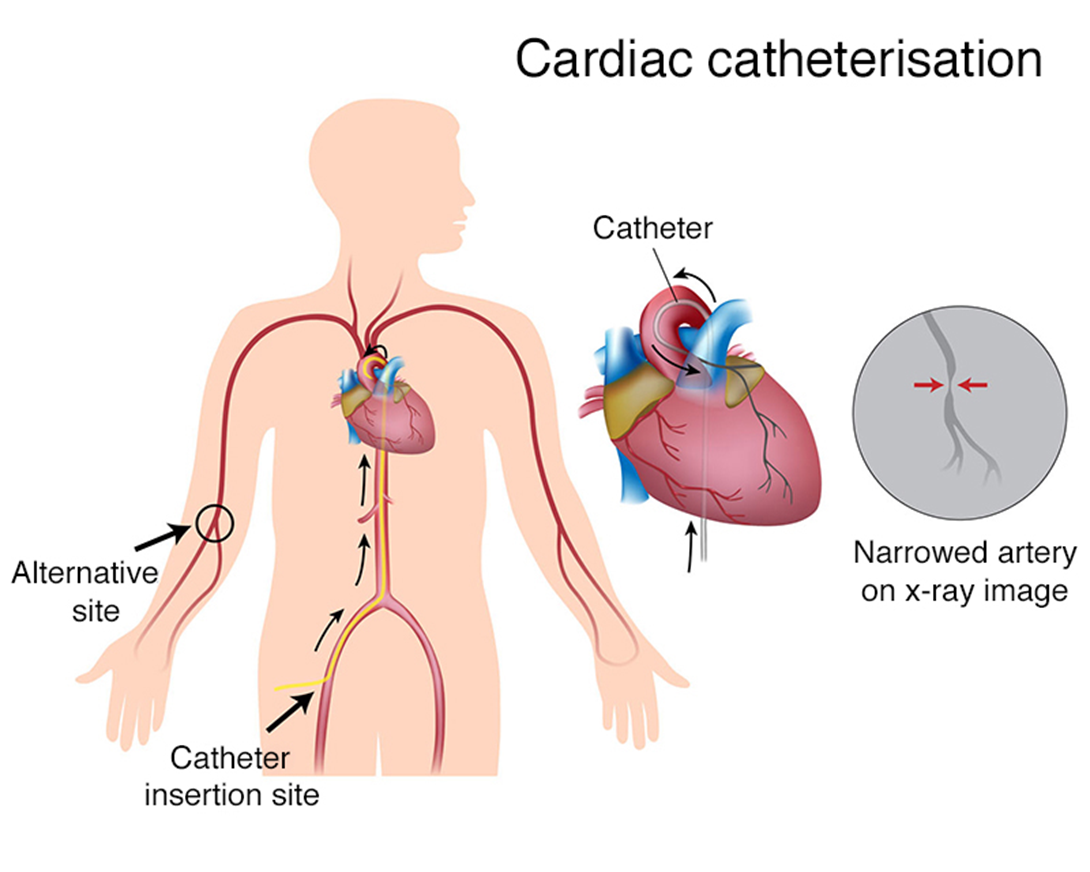A nurse is providing discharge instructions to the parent of a 10-year-old child following a cardiac catheterization. Which of the following instructions should the nurse include?
Offer the child clear liquids for the first 24 hours.
Assist the child to take a tub bath for the first 3 days.
Give the child acetaminophen for discomfort.
Keep the child home for 1 week.
The Correct Answer is C
Choice A reason: Offering the child clear liquids for the first 24 hours is not necessary, as the child can resume a normal diet after the procedure. Clear liquids are only recommended for the first few hours after the procedure to prevent nausea and vomiting.
Choice B reason: Assisting the child to take a tub bath for the first 3 days is not advised, as it can increase the risk of infection and bleeding at the catheter insertion site. The child should avoid tub baths, swimming, and soaking the site until it is completely healed, which may take up to a week.
Choice C reason: Giving the child acetaminophen for discomfort is appropriate, as it can relieve the pain and soreness at the catheter insertion site. The child should avoid aspirin and other nonsteroidal anti-inflammatory drugs (NSAIDs), as they can increase the risk of bleeding.

Choice D reason: Keeping the child home for 1 week is not required, as the child can resume normal activities within a few days after the procedure. The child should avoid strenuous activities, such as running, jumping, and biking, for at least 24 hours after the procedure.
Nursing Test Bank
Naxlex Comprehensive Predictor Exams
Related Questions
Correct Answer is D
Explanation
Choice A reason: Discouraging a high level of fluid intake is incorrect, as hydration is essential for preventing sickle cell crises and reducing blood viscosity. The nurse should encourage the child to drink at least 1.5 times the normal fluid requirement.
Choice B reason: Administering meperidine every 4 hr for pain is incorrect, as meperidine is not recommended for sickle cell pain due to the risk of neurotoxicity and seizures. The nurse should use other opioids such as morphine or hydromorphone for pain management.
Choice C reason: Applying cold compresses to painful, swollen joints is incorrect, as cold can cause vasoconstriction and worsen the sickling of red blood cells. The nurse should use warm compresses or heating pads to promote vasodilation and blood flow.
Choice D reason: Observing for indications of hypokalemia is correct, as sickle cell anemia can cause hemolysis and potassium loss. The nurse should monitor the child's serum potassium level and watch for signs of hypokalemia such as muscle weakness, cramps, arrhythmias, and constipation.
Correct Answer is C
Explanation
Choice A reason: Offering the child clear liquids for the first 24 hours is not necessary, as the child can resume a normal diet after the procedure. Clear liquids are only recommended for the first few hours after the procedure to prevent nausea and vomiting.
Choice B reason: Assisting the child to take a tub bath for the first 3 days is not advised, as it can increase the risk of infection and bleeding at the catheter insertion site. The child should avoid tub baths, swimming, and soaking the site until it is completely healed, which may take up to a week.
Choice C reason: Giving the child acetaminophen for discomfort is appropriate, as it can relieve the pain and soreness at the catheter insertion site. The child should avoid aspirin and other nonsteroidal anti-inflammatory drugs (NSAIDs), as they can increase the risk of bleeding.

Choice D reason: Keeping the child home for 1 week is not required, as the child can resume normal activities within a few days after the procedure. The child should avoid strenuous activities, such as running, jumping, and biking, for at least 24 hours after the procedure.
Whether you are a student looking to ace your exams or a practicing nurse seeking to enhance your expertise , our nursing education contents will empower you with the confidence and competence to make a difference in the lives of patients and become a respected leader in the healthcare field.
Visit Naxlex, invest in your future and unlock endless possibilities with our unparalleled nursing education contents today
Report Wrong Answer on the Current Question
Do you disagree with the answer? If yes, what is your expected answer? Explain.
Kindly be descriptive with the issue you are facing.
